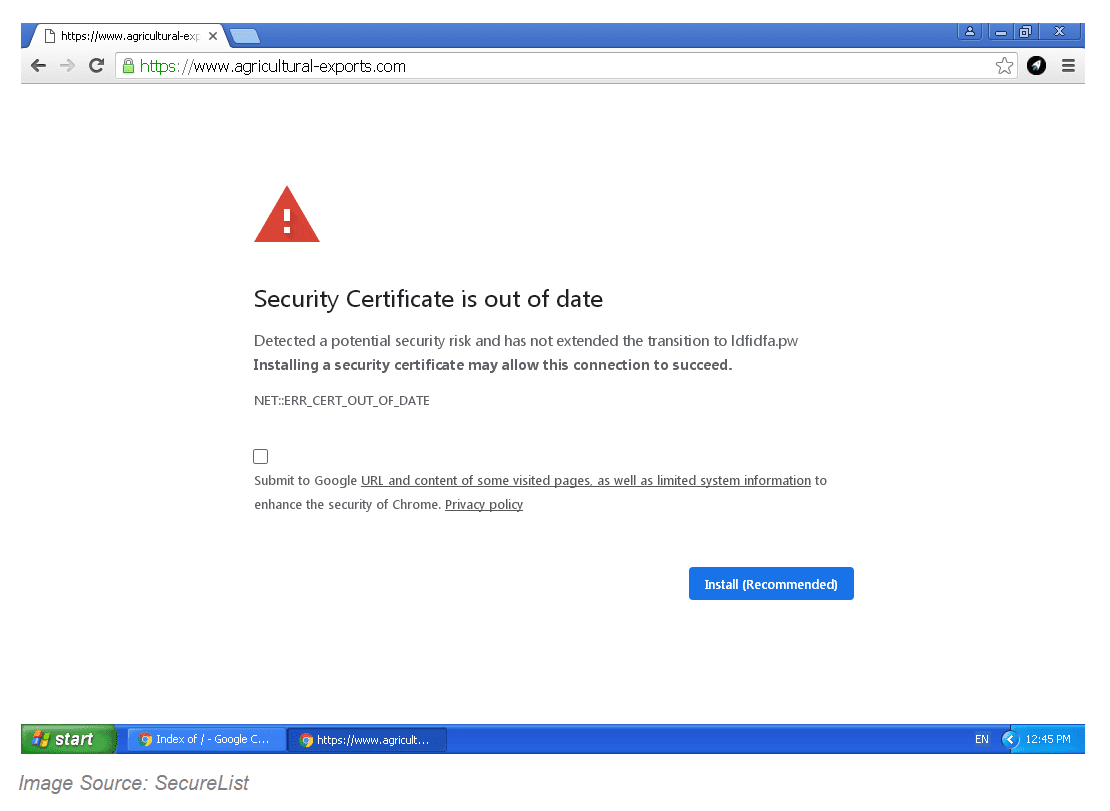
Criminals use our own typing against us. We all make typos when entering a web address from time to time. And criminals know this, so they purchase domains that are a typo away from the actual domain. All they have to do now is sit and wait for someone to misspell a domain and land on their scam website. This almost zero-effort scam called Typosquatting and it is obviously gaining an amazing amount of traction.
Security certificates are used to help us all determine if it’s safe to enter information into a website. Normally, they are indicated by an https:// preceding the website name. Often, the text before the domain name turns green if it’s deemed secure. There also should be a lock icon indicating a secure site. As mentioned before, anyone can buy a security certificate and put it on a website and criminals are doing just that. And it’s becoming harder to determine a safe website for this reason. In this latest case, they are trying to get users to click a link to update a security certificate, but what happens is one of two malware variants gets downloaded to the devices; Mokes or Buerak. These install a backdoor a hacker can use to go back later and capture screenshots, retrieve audio and video files, and steal files among other dastardly things. It also can disguise its activities using encryption.


Kaspersky reported finding this phishing method and found it on a variety of sites including on a zoo website and an e-commerce site selling parts for vehicles. They found infections dating back to January of this year.

